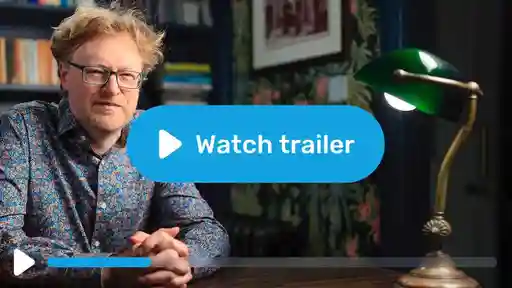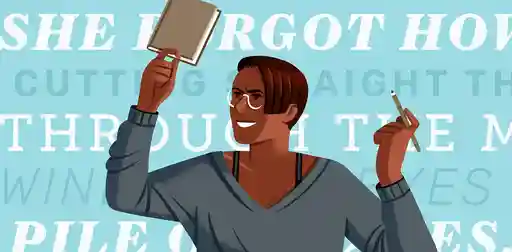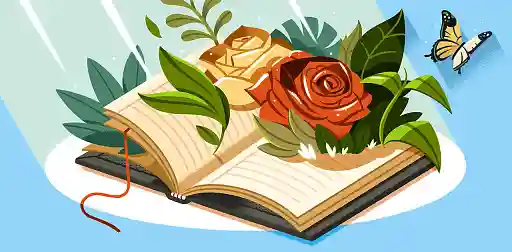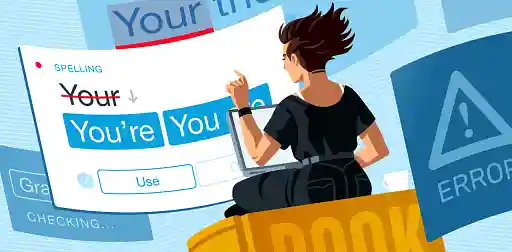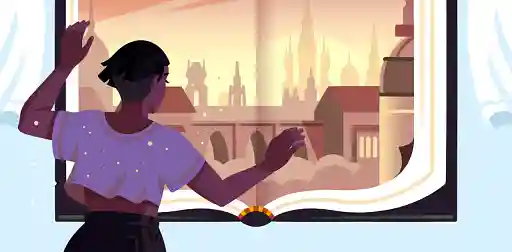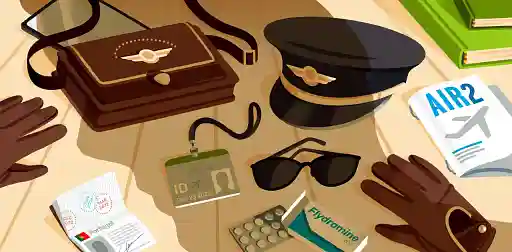Last updated on Oct 15, 2025
How to End a Story: The 6 Ways All Stories End
Martin Cavannagh
Head of Content at Reedsy, Martin has spent over eight years helping writers turn their ambitions into reality. As a voice in the indie publishing space, he has written for a number of outlets and spoken at conferences, including the 2024 Writers Summit at the London Book Fair.
View profile →When we first start to read books, we quickly understand that books have two types of ending: happy and sad. But as we develop our literary palate and read deeper, it soon becomes apparent that endings are somewhat more nuanced than that.
In the first part of this post, we will dive into the many types of endings that novelists have at their disposal — and reveal the impact they can have on the reader. In the second part, we'll give you some tried-and-true tips for writing an impactful ending for your own book.
The 6 types of story endings (with examples)
Let's dive into the most common types of story endings that you'll see over and over again in storytelling. Note that, as we provide some examples from novel endings, there will be... spoilers!
1. Resolved Ending
Wrap it up and put a bow on it. A resolved ending answers all the questions and ties up any loose plot threads. There is nothing more to tell because the characters’ fates are clearly presented to the reader.
Q: How can authors protect their rights when publishing, especially in the age of AI?
Suggested answer
I don't think anyone can fully protect themselves. If you act in good faith you will find that most other people will do the same. There will always be rogues, but selling books is hard enough if you are the real author, even harder if you have stolen it.
Andrew is available to hire on Reedsy ⏺
Example: Gabriel García Márquez’s One Hundred Years of Solitude provides a great example of a resolved ending. In his Nobel Prize-winning book, García Márquez intertwines the tale of the Buendia family and the small town where they live, from its creation until its destruction.
Before reaching the final line, however, he had already understood that he would never leave that room, for it was foreseen that the city of mirrors (or mirages) would be wiped out by the wind and exiled from the memory of men at the precise moment when Aureliano Babilonia would finish deciphering the parchments, and that everything written on them was unrepeatable since time immemorial and forever more, because races condemned to one hundred years of solitude did not have a second opportunity on earth.
With this ending, García Márquez effectively ends all hope of a sequel by destroying the entire town and killing off all the characters. Unlike a Deus Ex Machina ending, where everything is suddenly and abruptly resolved, this is an ending that fits with the central ideas and plot of this book. Though not exactly expected, it brings an appropriate closure to the Buendia family and the town of Macondo.
Why might you use a resolved ending? This sort of conclusion is common to standalone books — especially romance novels, which thrive on ‘happily ever afters’ — or the final installment in a series.
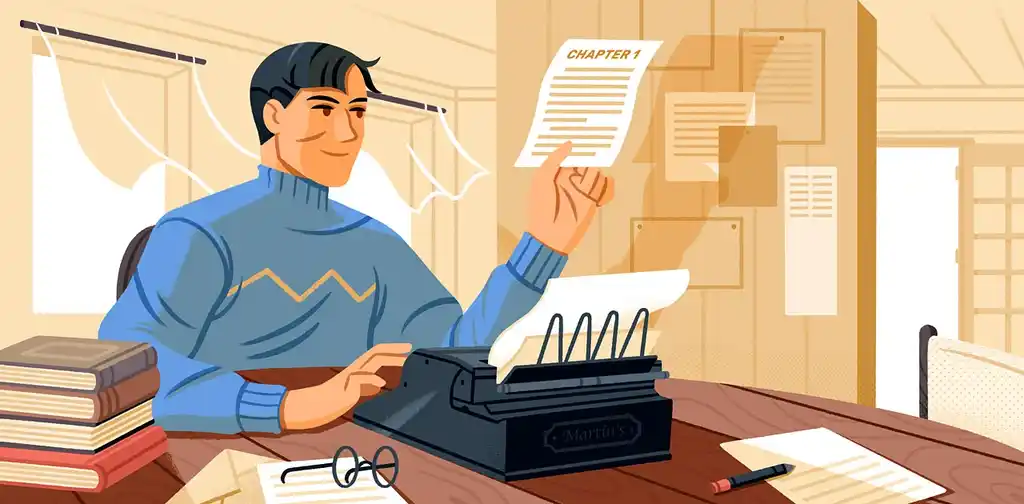
FREE COURSE
How to Write a Novel
Author and ghostwriter Tom Bromley will guide you from page 1 to the finish line.
2. Unresolved Ending
This type of ending asks more questions than answers and, ideally, leaves the reader wanting to know how the story will continue. It lets them reflect on what the hero has been through and pushes them to imagine what is still to happen. There will be some resolution, but it will, most likely, pose questions at the end and leave some doors open.
Q: What essential physical tools or items should writers always have on hand to help with the writing process?
Suggested answer
As an editor and a writer, the physical items I’ve carried with me have changed over the years. Back when I was a 90s teen, I always had a small notebook and pen in my car, purse, or backpack to jot down lines. I also almost always carried a physical book with me—what I was reading in school or for fun at home. Whether it was Great Expectations or The Mirror of Her Dreams, a book on the go filled the void and loneliness of the pauses in my teen life. The book I carried with me also gave me joy and energized me to do my own writing later when I was at home alone, listening to Spin Doctors or Jewel on my clunky CD-tape player.
Nowadays, a smartphone can do a lot for you and me if we let it. The Notes app on iPhones or other writing apps on Androids are great for taking down any poetic lines or other plot aha moments you might have while out with friends or coworkers or running around town getting errands done. As a mom, I often have to wait for my kids to get out of school or classes, so I read a book I’ve downloaded or an article on Substack on my phone to pass the time. (I also just scroll endlessly sometimes. Both things are totally fine!) The same can be done if you’re working nine-to-five and biding your time for a meeting to start.
If inspiration strikes, jot down what you’re thinking to get it out of your head before the bell rings or the meeting starts and life revs up again, the precious idea lost to cleaning out lunchboxes or putting out fires at your job.
If you’re having trouble using your phone as a writer’s tool, delete all your social media apps for a week, and see if it goes better. Do you find yourself writing more and scrolling less? Did you already try that and it not work? Then try to follow more writers on social media for inspiration. Even seeing writers’ day-to-day lives can be inspiring. What did they do yesterday? What shoes did they just buy? Sometimes even little things can motivate you to be in writer-mode.
Also, snacks. Never forget the snacks.
Sandra is available to hire on Reedsy ⏺
I'm a huge proponent of staying hydrated, so I will always recommend water. It's a great tool to give your brain space to think, too. Stuck? Take a sip of water. Finished a difficult line? Take a sip of water. Feeling achy after sitting too long? Take a sip of water.
Samantha is available to hire on Reedsy ⏺
A pocket notebook and pen or pencil. You never know when an idea will come around, or you suddenly figure out a solution to a writing problem. I keep one on me all the time, even if I'm sitting at my computer, because sometimes in the time it takes to decide what app/document to open, the thought will just vanish. It also gives me a chance to think visually, which is how I often work through things: mind-maps, doodles, sketches, and other ways of expressing myself that are not always easy to pull off with a keyboard.
And they're handy for impromptu to-do or shopping lists to boot!
Marisa is available to hire on Reedsy ⏺
Your smartphone! The quickest way to make sure you don't forget an idea is to record a voice note – save yourself the scramble for a pen and paper. Snapshots of places, scenes, details, and skies that inspire you are great for reference too.
Mairi is available to hire on Reedsy ⏺
A notepad or a phone as a way of taking verbal or written notes for ideas as they arise.
Melody is available to hire on Reedsy ⏺
I'm a sucker for a good pocket notebook. You never know when inspiration will strike, and while phone are great (and another note-taking device that works wonders) I've always found that physically writing something down helps the ideas flow more.
Sean is available to hire on Reedsy ⏺
Pen and paper if you're old-school.
Laptop (or in a pinch, smartphone) if you're new-school.
Coffee if you drink coffee; tea if you drink tea.
And when the words just aren't coming, access to whiskey and rum. 😉
Brett is available to hire on Reedsy ⏺
Example: Harry Potter and the Half-Blood Prince does exactly that. After years of confronting Voldemort, Harry finally knows the secret to bring him down once and for all. However, the road will only become more dangerous and will require more sacrifices than anybody thought.
His hand closed automatically around the fake Horcrux, but in spite of everything, in spite of the dark and twisting path he saw stretching ahead for himself, in spite of the final meeting with Voldemort he knew must come, whether in a month, in a year, or in ten, he felt his heart lift at the thought that there was still one last golden day of peace left to enjoy with Ron and Hermione.
Like Harry, readers know that a final meeting between him and Voldemort is coming and that everything will change for him and his friends. As a stand-alone book, this ending would probably be unsatisfactory. But as the penultimate book in the series, it leaves the readers wanting more.

Why might you use an unresolved ending? Because it can create anticipation and excitement for what comes next, you may want to use an unresolved ending if you are writing several books in a series. Who doesn’t love (and hate) a good cliffhanger?
3. Ambiguous Ending
An ambiguous ending leaves the reader wondering about the “what ifs.” Instead of directly stating what happens to the characters after the book ends, it allows the reader to speculate about what might come next — without establishing a right or wrong answer. Things don't feel quite unresolved, more just open to interpretation.
Example: The first installment of The Giver series, by Lois Lowry, uses this ending. The Giver focuses on Jonas, a teenager living in a colorless yet seemingly ideal society, and on the way he uses his newly assigned position as the Receiver of Memories to unravel the truth about his community and forge a new path for himself.
Downward, downward, faster, faster. Suddenly he was aware with certainty and joy that below, ahead, they were waiting for him; and that they were waiting, too, for the baby. For the first time, he heard something that he knew to be music. He heard people singing.
Behind him, across vast distances of space and time, from the place he had left, he thought he heard music too. But perhaps it was only an echo.
Readers will wonder what happens to Jonas once he finishes his journey and what happens to the town and people he left behind. There are three more companion books, but the story centering on Jonas is finished. Readers will see him again, but only as a side character, and will neither find out how he rebuilt his life nor how his old community fared. There might be speculation, but an answer is never clearly given: that is left to the imagination.
Q: What are the most common craft mistakes new authors make?
Suggested answer
One of the biggest mistakes I see from new authors is that they finish writing their manuscript and then they think they are done and ready for an editor to go through and review.
Writers need to be their own editors first. Because there are so many potential new authors every day, it's imperative that writers go back and edit their work thoroughly. That means reading, and rereading what they've written to understand how their characters develop through their novel, or how the topics that they brought up in chapter two are refined and built upon in chapter nine. Through that reading process, writers should be editing their work as they find pieces that aren't strong enough or need to be altered to make a better overall manuscript.
Matt is available to hire on Reedsy ⏺
The most common writing mistake I see from first-time authors is cramming too much into the first chapter. Your first chapter is a meet and greet, where you establish credibility, likability, and optimism that the book is worth the reader's time. Hook the reader, show your personality, but don't dump all your knowledge on them at the beginning of the book. Take them on an interesting, helpful journey,
Mike is available to hire on Reedsy ⏺
When might you use an ambiguous ending? If you want your readers to reflect on the meaning of your book, then this is the ending for you. While a resolved ending may satisfy readers, it probably won’t give them much pause at all. However, by trying to unpick an ambiguous ending, they get closer to what you, as the author, are trying to say.
4. Unexpected Ending
If you have led your readers to believe that your book will end one way, but at the last possible moment, you add a unexpected twist that they didn’t see coming, you’ve got yourself an unexpected ending! For an author, this type of ending can be a thrill to write, but it must be handled with care. Handled poorly, it will frustrate and infuriate your reader.
An unexpected ending must be done so that, while surprising, still makes sense and brings a satisfactory conclusion.
Example: A popular novel that makes use of this ending is And Then There Were None by Agatha Christie, where she tells the tale of ten murders without an obvious culprit that took place in an isolated island mansion. [Spoilers coming!] The last lines of the novel read:
When the sea goes down, there will come from the mainland boats and men.
And they will find ten dead bodies and an unsolved problem on Soldier Island.
Signed:
Lawrence Wargrave
The ways in which the murders occur let the reader suspect the guilt of just about every character — and then, in an epic twist, they all die, leaving the murders unexplained. It is not until the message in the bottle arrives that the true culprit is revealed, as one of the victims no less! The ending is satisfactory to the reader because it brings the plot to a close in a way that, though surprising, invites them to think back on how the murderer set things up for the remaining deaths, and ultimately makes sense.
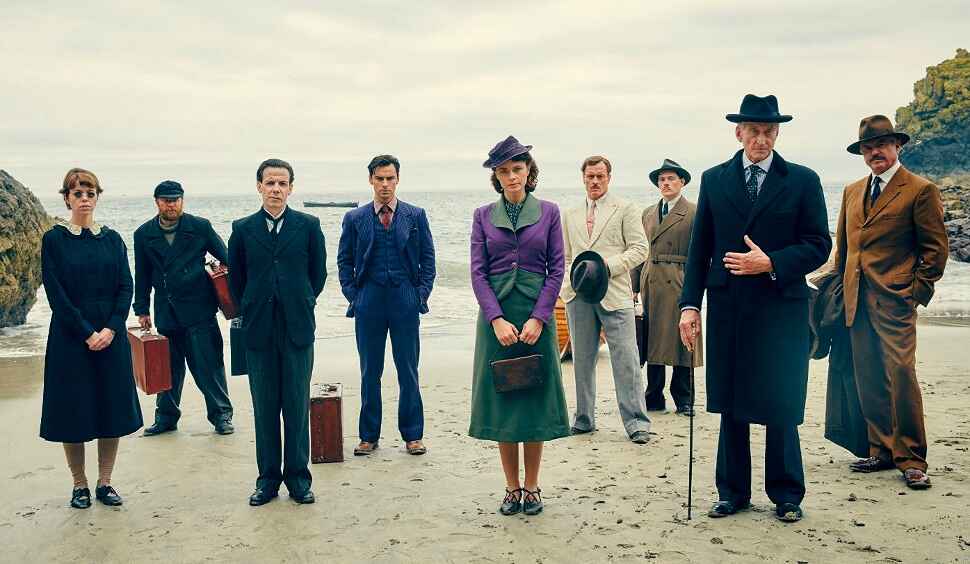
Why might you use an unexpected ending? These ‘twist endings’ are the bread and butter of mystery novels. Just be aware that while fans of the genre will expect a twist — they won't want one that comes entirely out of nowhere. To execute a flawless unexpected ending, you must lay groundwork throughout your book so that the reader can reflect on the plot and go, “ah, but of course!”
5. Tied Ending
Much of storytelling is cyclical. Sometimes it’s a metaphorical return home, such as in the classic story structure of The Hero’s Journey. In other cases, the cycle is quite literal — the story ends where it began.
Q: How can I overcome the fear that my story idea isn’t original or good enough?
Suggested answer
It's easy to walk into a bookstore, pull a finished book off the shelf, read it, and think, "Oh no. I could never write a book like this. I'm not good enough to be a writer."
This kind of thinking is a trap! As an editor, I've read hundreds of early drafts. Even the most exciting, most polished manuscripts that passed my desk needed several rounds of intense editing before they were ready for publication. And I was often seeing manuscripts after they had been through a few revisions already. It's not fair to compare your first draft to a published book that's been through many rounds of professional editing. Everyone's first draft needs work. If you expect your first draft to be on the same level as a published book, then you're going to set yourself up for a lot of self-doubt and disappointment.
However, when you pick up a book and think I could never write this, that's actually true. Not because you're a bad writer, but because your voice is uniquely and distinctively yours. You won't be the next Rick Riordan or the next Angie Thomas--but that's because you're going to be the next you!
Camille is available to hire on Reedsy ⏺
Even seasoned authors struggle with imposter syndrome and doubt themselves. That said, doing your homework is not a bad idea. Find out what books are similar to yours and find out if there is a glut in the market for that topic or if there is a need or hole in the market, and your book might fill a need.
The reality is that good books are not written; they are rewritten. That's why it is so important to work with an editor who can help you revise the book and take it to the next level, so it can become the best it can be.
Melody is available to hire on Reedsy ⏺
Example: Erin Morgenstern uses this ending in her book The Night Circus, where she tells of a duel between two magicians that takes place within Le Cirque des Rêves, a traveling circus and, arguably, a character on its own.
Widget takes a sip of his wine and puts his glass down on the table. He sits back in his chair and steadily return the stare at him. Taking his time as though he has all of it in the world, in the universe, from the days when tales meant more than they do now, but perhaps less than they will someday, he draws a breath that releases the tangled knot of words in his heart, and they fall from his lips effortlessly.
‘The circus arrives without warning.’
With what may be the most famous lines of the book, “The circus arrives without warning,” this novel closes the characters’ storylines the same way the book begins. In both cases, the words are used to start telling a story; in the beginning, it serves as an introduction to the book, the words filled with wonder and expectation. In the end, it serves as a resolution, the words filled with hope for those who remain. Additionally, Morgenstern later uses a few more pages to finish the second-person narrative of the reader’s own visit to the circus, effectively ending the novel with the same POV that it began.
Why might you use a tied ending? More common in literary fiction, a tied ending can help give you a sense of direction when writing your book — after all, you are ending the same way you began. But don’t think that this makes writing your ending easier. On the contrary, it is up to you to give greater depth to those repeated actions and events so that, by the end, they have a completely different feel.
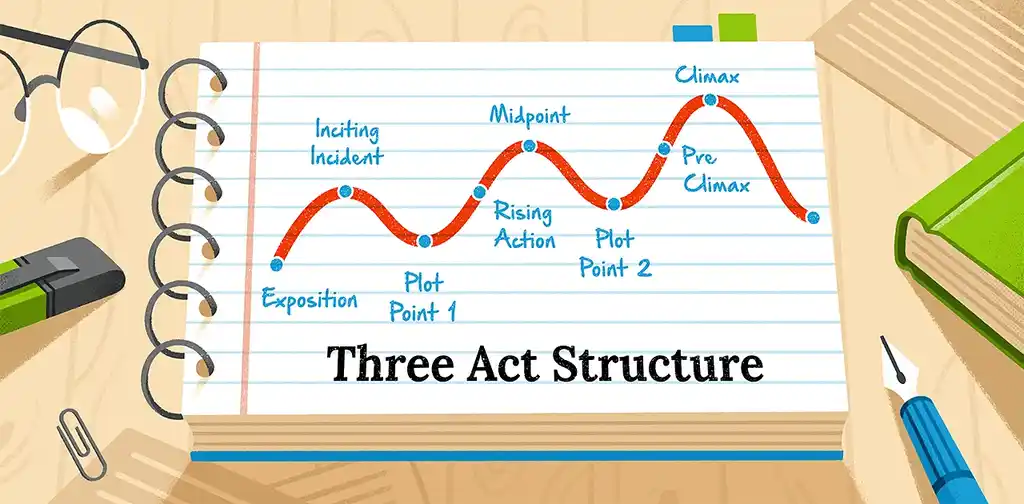
FREE COURSE
How to Plot a Novel in Three Acts
In 10 days, learn how to plot a novel that keeps readers hooked
6. Expanded Ending
Also known as an epilogue (find out more here), this type of ending describes what happens to the world of the story afterward in a way that hints at the characters' fates at some point in the future.
Example: In Markus Zusak’s The Book Thief, Death himself narrates the story of a young girl living in Nazi Germany. In his four-part epilogue, Zusak gives the reader an insight into what happened to Liesel after the bombing, her adult life, and even her death.
All I was able to do was turn to Liesel Meminger and tell her the only truth I truly know. I said to the book thief and I say it now to you.
*** A LAST NOTE FROM YOUR NARRATOR***
I am hunted by humans.
Instead of going into great detail, Zusak uses short chapters that feel more like sneak peeks into her life. Additionally, it serves the purpose of joining Liesel, the main character, with the narrator, Death, and allowing them to converse on more equal terms.
Why might you use an expanded ending? If you need to tie up loose ends but could not do it within the actual story, then this is the ending for you. However, it should not replace a traditional ending or be used to compensate for a weak ending. Instead, it should give further insight into the characters and give a resolution to the readers.
Now that you understand what kind of endings there are, let’s start thinking about how to create them for yourself.
How to end a story in 7 steps
To help you create a story ending that is unexpected and satisfying, we've turned to the professional editors on Reedsy and asked for their top tips on wrapping up your book.
How to end a story:
- Find your ending in the beginning
- Completion goes hand-in-hand with hope
- Keep things fresh
- Make sure it’s really finished
- Last impressions matter
- Come full circle
- Leave some things unsaid
1. Find your ending in the beginning
While your story may contain several different threads and subplots, all books are going to have a central question that’s raised by the opener. Who killed the boss? Will our star-crossed lovers end up together? Can a rag-tag group of heroes really save the world? Is there meaning to a middle-class existence? Can this family’s relationship be saved?
Your central question is the driving force of what will happen in the plot, so make sure you settle it by the time the book ends. Even if your hero's story continues in a sequel, you’ll want each book to have a central question and a resolution for them to feel complete.
2. Completion goes hand-in-hand with hope
Literary agent Estelle Laure explains that a great ending is one that gives the reader both a feeling of completion and hope.
Q: What techniques can writers use to maintain a consistent and effective tone throughout their piece?
Suggested answer
Tone is an aspect I look carefully at when working on a manuscript. It's easy to get wrong. It often boils down to knowing precisely what your story is. Genre and tone go hand in hand.
Perhaps a clear example of a muddled or uncertain tone can be found with the use of humour in a novel. I've read quite a lot of manuscripts that deal with dark subject matter, but also include random toilet humour. This tends to create a clash in tone. My note on toilet humour is often "Why have you included this? Does it work?" Gallows humour can work in a serious and dark story, but fart jokes? Probably not. Also consider carefully your characters: what do they find funny? What sort of jokes do they tell? Is humour something they fall back on in life, especially during the dark times? What underlying emotional need is met by humour? This knowledge and understanding applies also to your narrator - who are they? What amuses them? Do they tell jokes? Do they make fun of the characters (a la Jane Austen)?
Watching films can help us to understand tone and what is contributes to a story. The filter of tone is played out on screen for us to observe. Blade Runner, for instance - it's always dark, and raining, and generally bleak, menacing, and miserable. Barbie - bright, colourful, artificial, and fake. Schindler's List - shot in black and white, which adds greatly to the overall tone. Also note the humour in this film. It's present, and needs to be, because it is such a dark film, and the viewer needs the light relief. But the humour is well-matched to the tone - quite dark, and often based on the clash of personalities of Schindler and Stern. Think also about the soundtrack of a film - the music tends to match the overall mood, or tone, of the story. The famous Jaws soundtrack, for example. Who can forget that? And it matches perfectly the unsettling tone of the story.
Tone is really a filter through which a writer tells their story, and the writer is, or needs to be, in full control of that. Novelists don't have the tools that film-makers have, so tone is created only by the words on the page. It all boils down to control - and knowing your story and your characters inside out is the foundation. A well-controlled tone is always something to aim for when writing, and if it's present, for me as an editor, it's a great sign - it means the writer knows their story, their genre, their characters, and even their reader. It's wise, indeed vital, to understand the tone you are hoping to create, and work towards this throughout the writing and editing process.
Louise is available to hire on Reedsy ⏺
Make sure the tone is what you want at the outset. Then use this as a guide every time you sit down to write more material. You don't need to read everything that has been written so far, but even re-reading the opening or a page or two of what was written the day before or during the last writing session can help to bring that "voice" and "tone" to mind, so that particular tone can be continued.
Melody is available to hire on Reedsy ⏺
“You have to assume the character has gone through hell, so let them see something beautiful about the world that allows them to take a breath and step into the next adventure. Even your ending should leave your reader dying for more. They should close the book with a sigh, and that’s the best way I know how to get there. This is, after all, a cruel but wondrous life.”
Hire an editor and give your book a powerful ending
George W.
Available to hire
Successful collaboration-oriented book editor in the memoir, history, education, business, social justice, and personal development genres.
Rosie W.
Available to hire
A conscientious and enthusiastic indexer, my subject specialisms are Geography, Environmental/Earth Science, Social Science and Economics.
Michael F.
Available to hire
Professional editor and proofreader with extensive experience in the publishing industry, working with both nonfiction and fiction titles.
3. Keep things fresh
This is good advice for every stage of writing, but perhaps nowhere is it more important than the ending. While there are certain genres where a type of ending is expected (romances should end with a happily ever after, mysteries with identifying the killer), you don’t want people to be able to see everything coming from miles off. So even if the payoff from the big resolution is expected, as the writer, you’ll want to think hard to find ways to keep things fresh and interesting. To achieve this, try to dig deeper than your first impulse because chances are, that’s also going to be your audience’s first impulse as well. You don’t necessarily need to subvert that expectation, but it will give you some hints as to what most people think will happen.
4. Make sure it’s really finished
To create a satisfying ending, close your book with purpose.
As Publishing Director of Endeavor Media, Jasmin Kirkbride’s biggest tip is to make sure you follow the rule of Chekhov’s Gun.
“Every subplot and all the different strands of your main plot should reach satisfying, clear conclusions. If they are meant to be left ambiguously, ensure your reader knows this, and create something out of that uncertainty.”
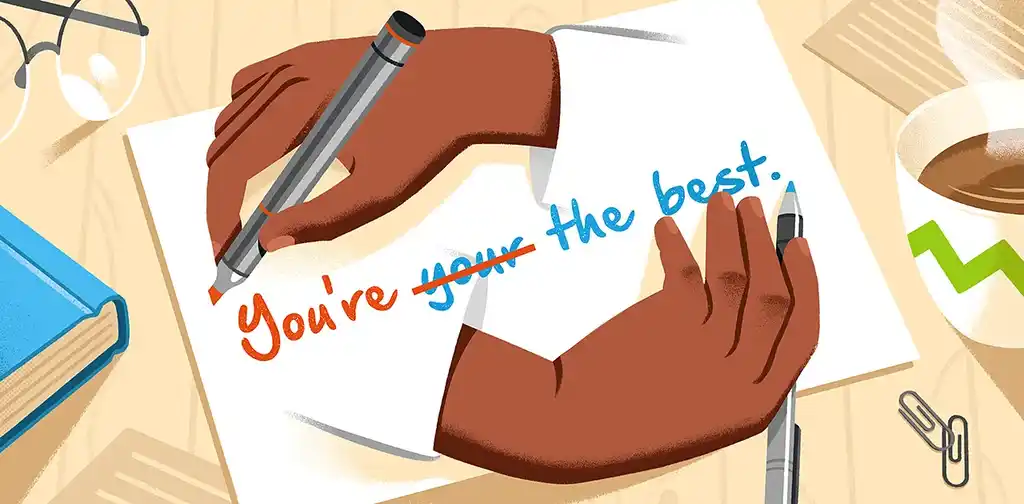
FREE RESOURCE
Get our Book Editing Checklist
Resolve every error, from plot holes to misplaced punctuation.
5. Last impressions matter
In some ways, the final line of a story is even more important than the first one. It’s the last impression you’ll make in your reader’s mind, and the final takeaway of the whole book. Hone in on what kind of emotions you’d like your reader to feel as they close the book, and ask yourself what kind of image or concluding thought would best convey that. Not sure what that should be? Try looking at your book’s theme! Often the final image is the summation of everything your theme has been building.
6. Come full circle
Editor Jenn Bailey says that a good ending brings the book’s internal and external story arcs to a rational conclusion.
Q: What lessons can first-time authors gain from analyzing popular books in their chosen genre?
Suggested answer
Analysing popular books in your chosen genre will help you in two ways. Firstly, you can learn from the choices and tactics used by those authors. Secondly, you can see how your proposed book fits into the market.
Susanna is available to hire on Reedsy ⏺
Look for the balance between narration and dialogue. Watch how and when authors introduce new characters. Look for how visual and sensory details are woven into the story as it goes along, and how the author doesn't stop for long to weave in these details.
Look for the initial inciting incident and pay attention to where it falls in the book. Watch for how much happens in the first 50 pages, and see if the plotting of your own book moves along at a similar pace.
Look at those all-important first lines and first chapters of a book and see if you can glean knowledge as to why the author chose to open with that sentence or paragraph.
Melody is available to hire on Reedsy ⏺
“You need to come full circle. You need to end where you began. You need to take the truth your main character believed in at the beginning of the story and expose it as the lie that it is by the end. In your ending, the main character doesn’t have to get what they want, but they do have to get what they need.”
For more about character arcs, check out this post!
7. Leave some things unsaid
There’s a balance to endings — too little resolution and your book will feel rushed and unsatisfying, but too much and the resolution (dénouement) starts to drag. In general, though, you want to keep things brief, especially if you want room for an epilogue. It’s okay to trust your readers to reach some conclusions on their own, rather than spending whole chapters making sure every question you raised is answered. But, if do you really want everything tied off, consider moving the resolution of some of your subplots to just before the climax. This avoids jamming everything into the last five pages, allowing your subplots space to breathe.
As we have seen, there are many methods for ending stories! However you decide to finish your novel, there is one thing that you should always keep in mind: take account of the story that came before and give it the ending that it needs, not the one you think readers want, and it will be satisfactory for all.
